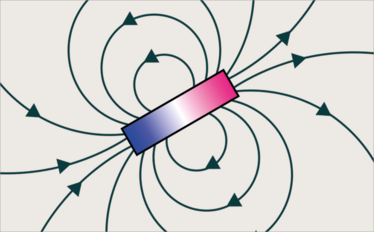If a molecule and its mirror image cannot be superimposed, it is considered chiral. The two versions (called enantiomers) can exert different biological effects – a fact that was made painfully clear by the thalidomide scandal. Today, the separation and analysis of chiral molecules is an expensive process, but an international team of researchers has developed a generic and cheaper method of separating chiral molecules – using magnets (1).
“We found that the interaction of chiral molecules with magnetic substrate is enantio-specific,” says Ron Naaman, Professor in the department of Applied Physics, Hebrew University, Israel, and study co-author. “One enantiomer interacts more strongly when the magnet is magnetized in one direction, while the other enantiomer interacts more strongly with the substrate when it is magnetized in the opposite direction.”

Current methods to separate chiral molecules are specific to each molecule. “Where high-performance liquid chromatography (HPLC) is used, columns must be refreshed once a certain amount of material is passed through them,” says Naaman. “This is time consuming and expensive. In some cases, there are no good methods for separation.”
The new method is based on “chiral induced spin selectively,” which Naaman, and his Hebrew University colleague, Yossi Paltiel, has been working on for the past decade. Electron spin has two directions, often called “up” and “down,” and and two electrons can only form a bond if they have opposite spins. If a substrate contains electrons, orientated with a uniform spin – as in magnetic material – then the strength of the interaction between the chiral molecule and the substrate will depend on the spin. Because electron spin orientations differs in chiral pairs, a perpendicularly magnetized substrate can be used to separate chiral pairs.
The new method could allow the separation of chiral molecules from a mixture of molecules, either chiral or achiral – potentially offering an adjunct or even an alternative to HPLC.
- K Benerjee-Ghosh at al., “Separation of enantiomers by their enantiospecific interaction with achiral magnetic substrates”, Science (2018). PMID: 29748324.

Over the course of my Biomedical Sciences degree it dawned on me that my goal of becoming a scientist didn’t quite mesh with my lack of affinity for lab work. Thinking on my decision to pursue biology rather than English at age 15 – despite an aptitude for the latter – I realized that science writing was a way to combine what I loved with what I was good at.
From there I set out to gather as much freelancing experience as I could, spending 2 years developing scientific content for International Innovation, before completing an MSc in Science Communication. After gaining invaluable experience in supporting the communications efforts of CERN and IN-PART, I joined Texere – where I am focused on producing consistently engaging, cutting-edge and innovative content for our specialist audiences around the world.



















